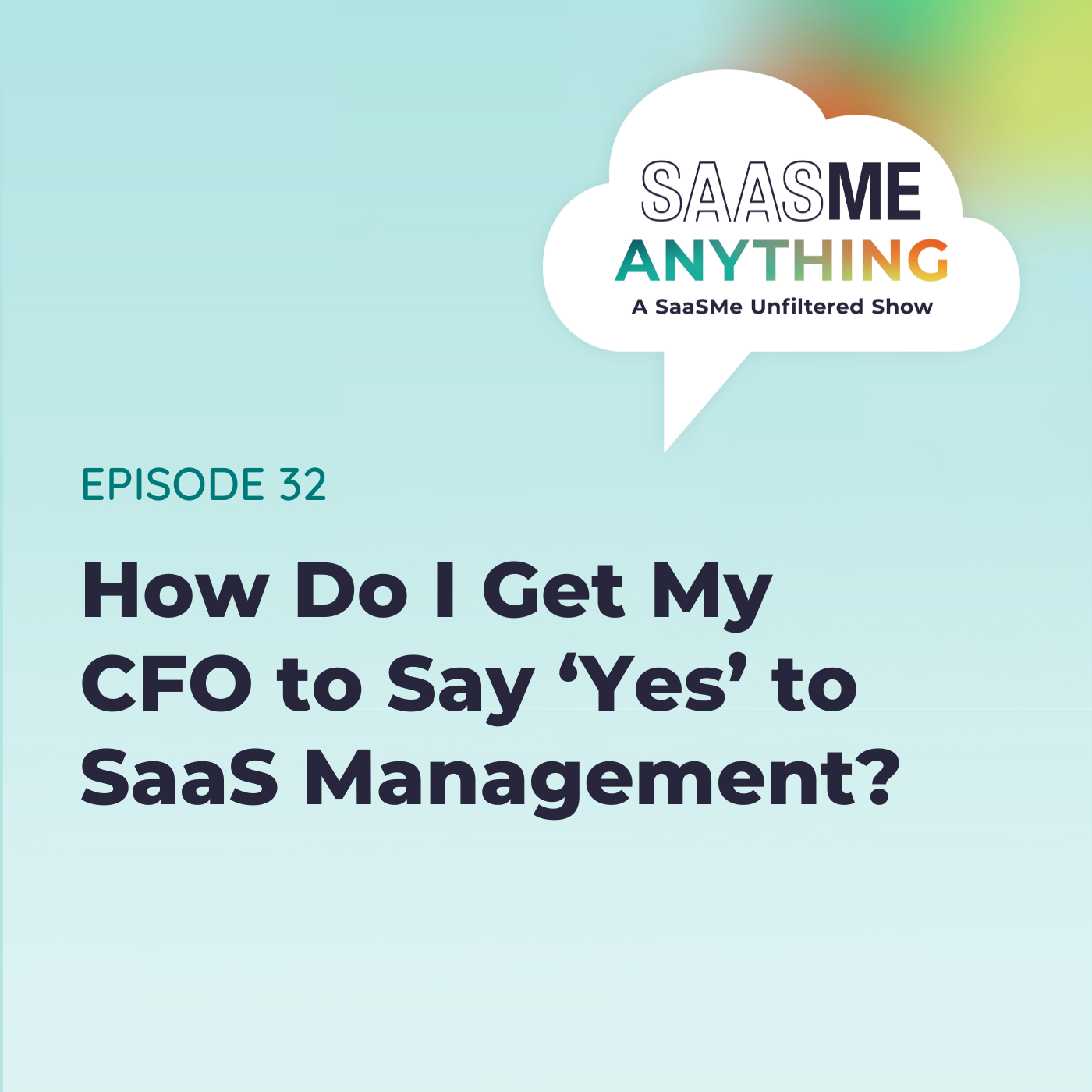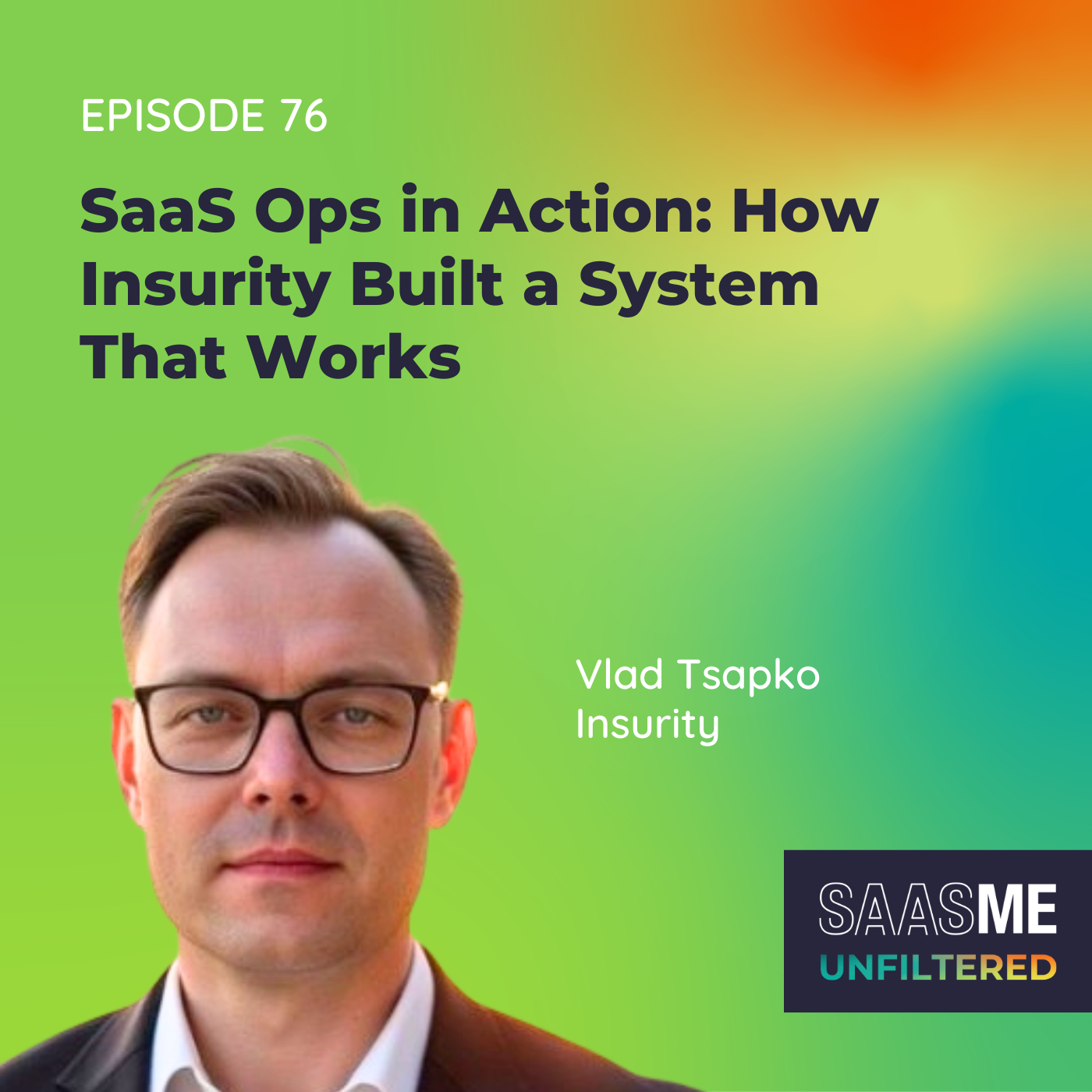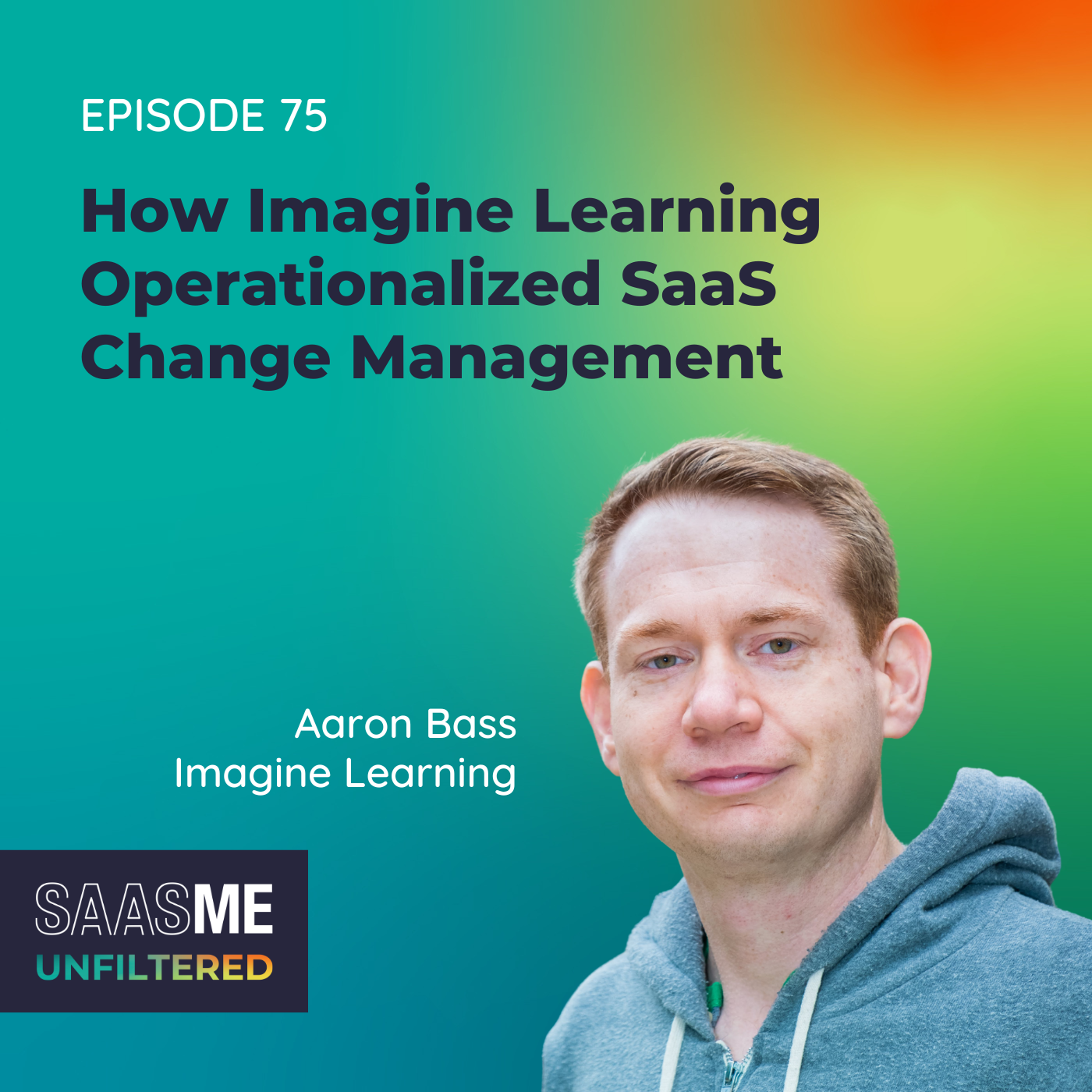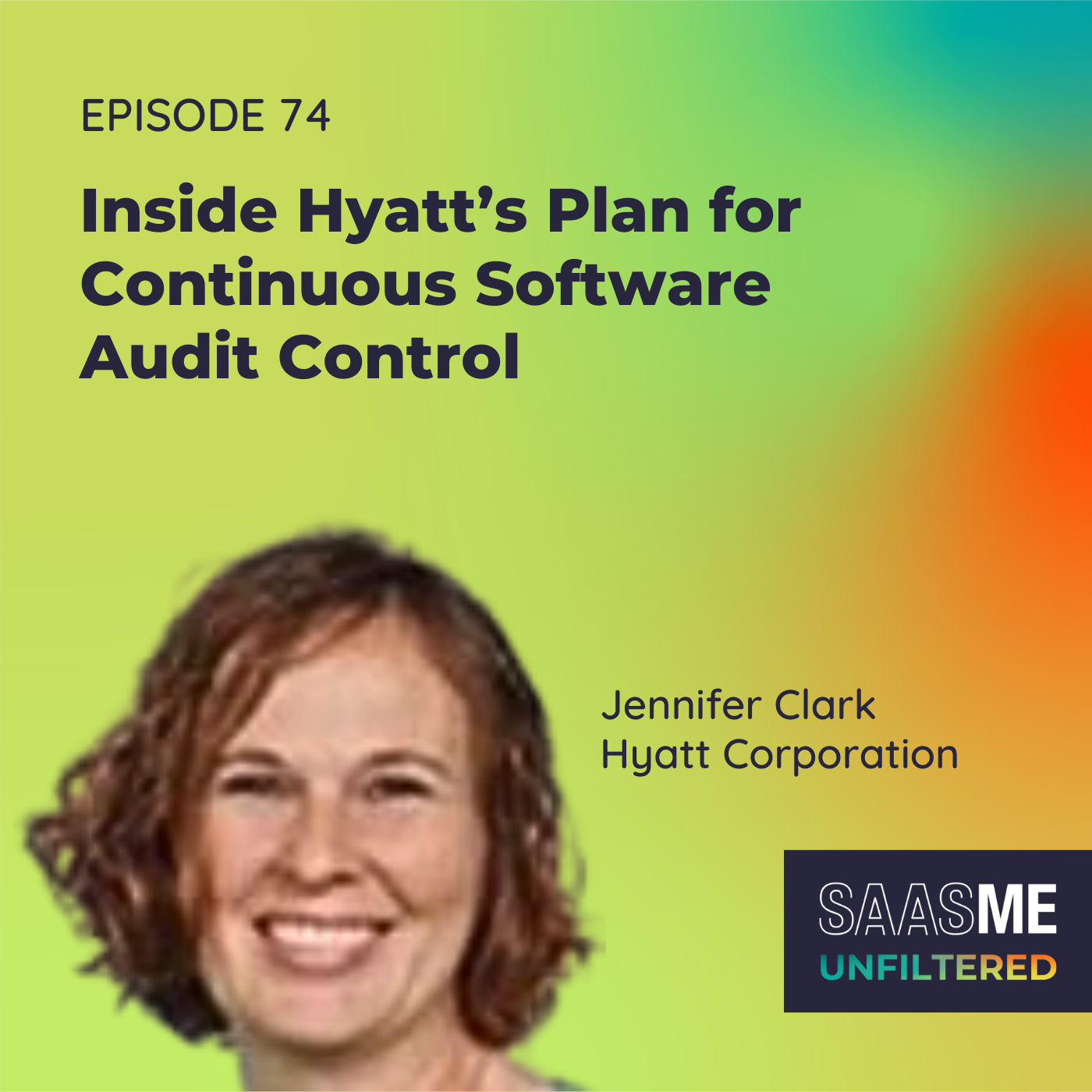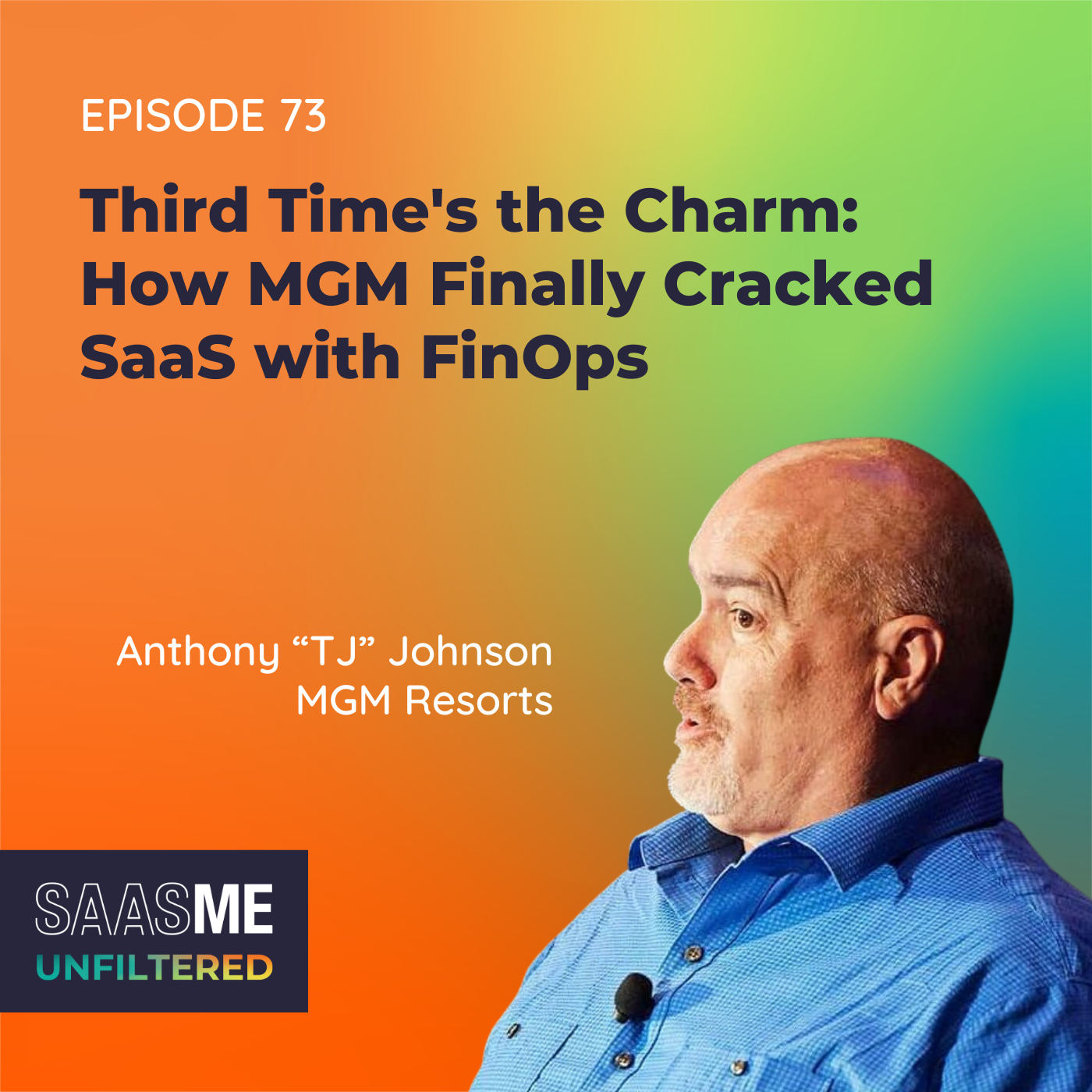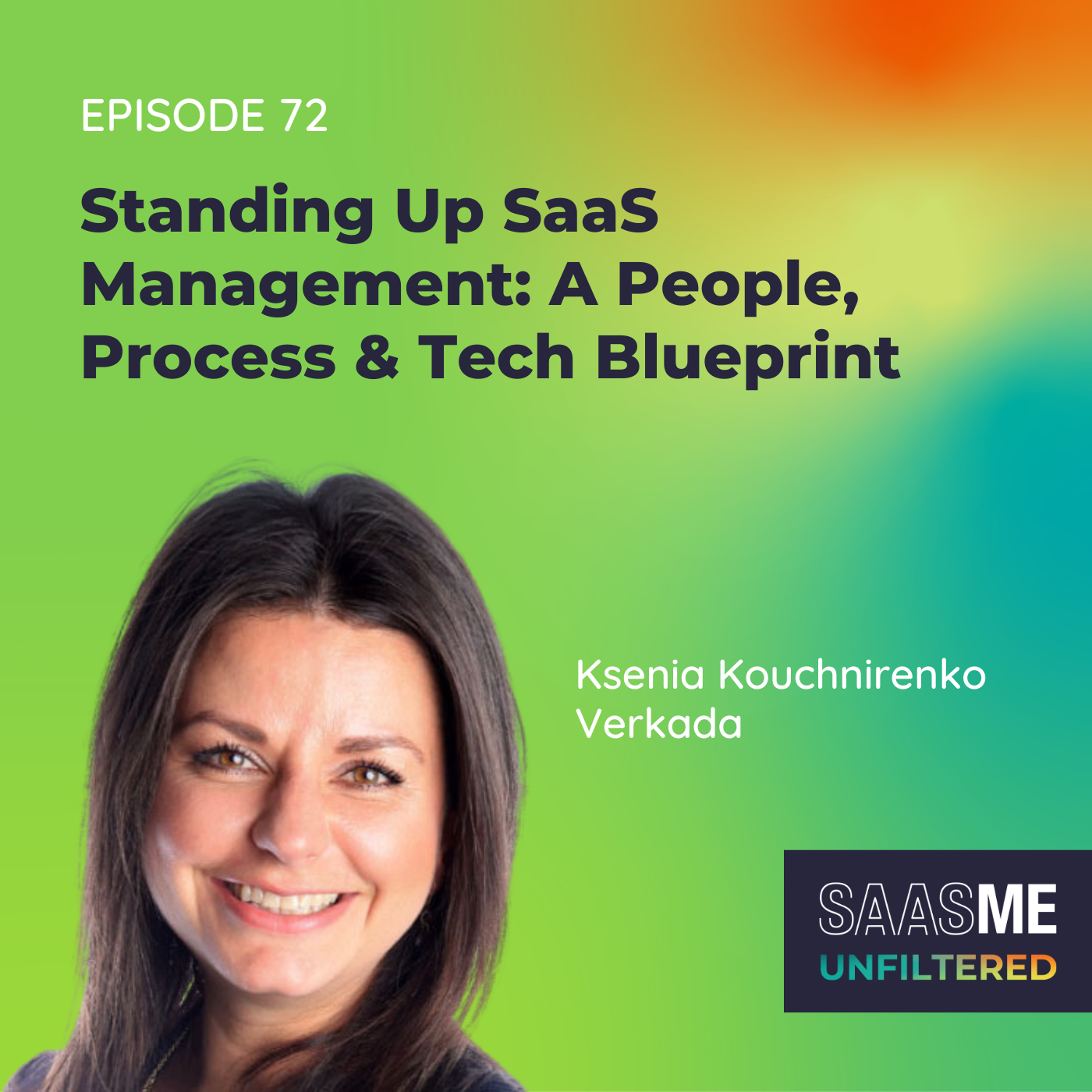How Do I Get My CFO to Say 'Yes' to SaaS Management?
- 0.5
- 1
- 1.25
- 1.5
- 1.75
- 2
Ben Pippenger: All right. Hey, everyone. This is Ben Pippenger here on our next episode of SaaSMe Anything, and I'm really excited for today's topic. On this episode, we are going to answer the question of, " How do I get my CFO to say yes to SaaS management?" Something that we hear a lot working with customers. And so, I'm really excited to dig in here and hopefully provide some insight for all you that are listening. And we're going to approach this episode a little bit differently today than we have in the past. I'm really, really excited to have Jason Leet on with us today. He is our CFO here at Zylo, and he is actually our first official guest of the SaaSMe Anything podcast. So, really excited to have him to help him answer and tackle this really tough question, get his perspective on this. And then we're actually going to do something a little bit differently too at the end here. We're going to do a role play where I'm going to be the IT buyer and Jason's going to be the CFO, and we're sort of work through what that conversation could look like. So Jason, pumped to have you and welcome to SaaSMe Anything.
Jason Leet: Thanks, Ben. It's great to be here. Looking forward to the conversation.
Ben Pippenger: Yeah, for sure. Well, let's dig in here. So first things first, we're going to spend a couple minutes here just walking through the challenges that CFOs face as it relates to software as a service. So I'll cover off on a couple key things and then kick it over to Jason to talk a little bit about just the importance of the relationship between the CIO and the CFO. So to get going on really the key challenges that CFOs face with SaaS, there's about five different key challenges I'll highlight today. The first one is visibility and predictability with SaaS. So you think about what a CFO really cares about and things they focus on. A lot of it is around forecasting and budgeting and really understanding what's going on in the business and where money is being spent. From our own data, we find that on average companies are spending about$ 50 million on software as a service applications. And so, CFOs have a really big desire to understand where this is happening, what's going on, who's spending the dollars and on what so they can properly plan and forecast for software. Second key area is around accuracy and control. So what good is a forecast if you don't have accurate data and don't have complete visibility to know what's truly going on? CFOs need to understand where software's being bought and who is owned by from an IT perspective. So IT groups, what are they responsible for? They also need to understand what's being purchased within the business. So where maybe your CMO or your CRO are out responsible for buying applications. And they also need to also think about where employees are buying tools. So what employees are purchasing and putting on credit cards in order to get that complete picture, that 360- degree view of all software that's being bought across the organization. Next point is on value and efficiency. So you think about a CFO, they really want to look at, " For every dollar I'm spending, what's the return on that investment." Really thinking about shoring up any waste without putting any additional overhead on the business. Our data at Zylo, we found that about 44% of SaaS licenses are wasted. So meaning that they're either not being used at all by anyone or they've been provisioned out to an end user that's just not using the license and has the ability to then pull that back. And also layer on top of that, the ability to look at things like benchmarking and really putting a more efficient processes in place to manage SaaS applications is really right in square line with goals and targets that they'd want to accomplish. Fourth point here is around scalability. We all know this that SaaS sprawl is a real thing. There's too many tools out there, a lot of the tools that do the same things as other tools. Oftentimes, you have the same tool being bought multiple ways. So how can a CFO really think about how could we be more efficient with the tools that we're using? How could we be more efficient in our processes for employees to get access to tools that they need to be as effective in the most effective as they can within their roles, within their own organization? And then last pain point is around optimization. Really, you should always be optimizing whether you're the CFO or you're an employee at a business thinking about, " Are we really getting the most that we possibly can out of the investments and the tools and the things that we're buying for the company?" So it should be a goal from negotiation with your SaaS vendors. So as you're going out and you're buying or renewing software all the way through to just the daily active usage of those products. Are we making sure that we're using every license to its full capacity in order to remove any waste from the picture? So Jason, I don't know if you have any real life examples to share around those pain points? That'd be awesome to hear.
Jason Leet: I sure do. No, I think it's a fantastic list. And maybe just use a couple examples here. So prior company experience, software got out of control very quickly. So we had no visibility into our SaaS across the business. Everyone was purchasing it. I couldn't forecast it, I couldn't plan for cash on it, and I didn't know who was doing what. So the visibility piece speaks volumes to me because it is decentralized and it can get out of control in an organization very quickly, especially as you're growing. I think second, one of the things that as CFO and as a finance person that pains me is seeing the redundancy across the software stack, seeing multiple project management tools, seeing multiple video tools, multiple whatever planning tools. It's wasted capital going towards multiple versions of the same type of software that could be deployed more effectively across the business in other areas. And I think the other piece that we all fall victim to is not being able to be proactive enough and planning around your SaaS software renewals. They come up, they sneak up on you, and next thing you know, you're either in an auto- renewal situation or you're effectively auto- renewing because you don't have enough time to understand what's the best pricing, how do I rationalize my license count, what am I actually using. And therefore, you effectively auto- renew for another year and just kick the can down the road, and you leave a lot of money on the table. So those are three of many, many examples of the challenge of having SaaS across your software stack today.
Ben Pippenger: Yeah. It's not easy, that's for sure, Jason. What do you think about that relationship then that you've seen successful for CIOs and CFOs? How do they need to work together to help solve these problems?
Jason Leet: Yeah. I think the partnership is incredibly important and I think for a few reasons. One is as we'll talk about a little bit more in a few minutes. The CIO only owns part of the software technology stack in a company today because of SaaS sprawl, because of the decentralization. The CTO, the CRO, the CMO are all material software buyers and budget owners. And so, what becomes difficult is if you try to think about from a change management perspective to drive scale and efficiency across your business, it's really difficult for the CIO to do that alone. And that's where the CFO can come in and help and really make it a top- down mandate across the business, so the CIO is empowered to go out and drive this change across all these different functions, whether they own that software directly or not. And I think this is especially relevant in this current environment where every company is looking to reduce expenses and increase profitability. That partnership, really the CIO and the CFO can be true partners and help each other tremendously achieve common goals for their company.
Ben Pippenger: Yeah. I think just to double hit on that point you made there the last I mean, just with the way the world operates now and as we think about buying new things, everything is with a different level of scrutiny. So as our IT listeners are out there, and if you're an IT leader that's out considering buying anything really locking arms with your CFO and going after it together is definitely really strong advice. All right. So, I'm pretty excited for this next part. Jason and I are going to do a little role play here with potentially what it would look like if you're an IT leader going to your CFO to talk about SaaS management and trying to get approval to go out and buy a SaaS management platform. So for context, we're going to imagine that I'm the IT leader and not that hard to imagine that Jason is the CFO since that's his bread and butter here at a mid- size company of about 1, 500 employees. Also, to set the stage here, according to our Zylo's annual report, our SaaS management index on average, a company that size has about 255 applications and spends about$ 29.8 million annually on SaaS. So we're going to use those numbers to help guide this conversation. And first things first, I'm going to put on my buyer hat here. So I'm going to flip over to my IT buyer persona and let's get into this. So hey, Jason, really appreciate your time. I know you're really busy. Here's our CFO. I want to meet with you today to just discuss a new software platform I'm considering adding into our company. This is a SaaS management platform. I think it's going to really help us get a better handle on software and what's going on here at the company.
Jason Leet: Well, great to see Ben as always. But I'm a little confused because I think you know already, we're not buying any incremental software right now. We're trying to actually take software out of the business. And so, I'm not sure where this conversation is going to go. And I guess my first question is why can't you do this already? Why aren't you doing it already? Why do you need more software to manage software? That just sounds silly. Don't you know and understand where all of our software is today? Isn't that your job as IT leader?
Ben Pippenger: It is definitely part of my job, and I was actually a little nervous to bring this forward because for that reason. But you think about SaaS, and I know you know this, you work with a lot of different parts of the business when they're out buying software. It's not just centrally bought by our IT team, it's bought by really everyone at our company. The IT and my department is really responsible for a lot of the core applications we run our business on. But over in marketing, they're buying applications in order to better target our customers. And in sales, they're working to operationalize their sales process in order to win more deals. So there's a lot of software that's being bought across the business. Even employees are out buying stuff. The partners that we're considering is Zylo, they found that only 18% of applications and only 31% of the spend are currently owned by IT. So a lot of that's happening outside of really my purview today. So yeah, I mean, it's a big challenge, I think. You think about just that shadow IT side of things as well where employees are out buying stuff. There's potentially risk being added into our organization and it's a really big problem, Jason. I look to Gartner as well as I was doing my research here to figure out how big this problem is. Their projections are that over the next few years, software spend is going to continue to grow, SaaS spend specifically at about 15% to 20% every year. So we'll continue to see additional growth and from a spend perspective. They've also looked at from a risk angle and they came out with a statement that said, " Organizations that aren't centrally managing their software are five times more susceptible to a cyber incident or data breach." And then finally, they also said, " That organizations that aren't addressing this are going to overspend on SaaS by at least 25%."
Jason Leet: Well, I think that's all interesting. It sounds like opportunity for us to get better in that area for sure at some point. But we have a lot of important initiatives going on in the business right now. And I guess I'm not seeing yet something that's compelling enough to talk about why this should be prioritized along with other things that are very defined and quantifiable like increasing revenues, increasing customer satisfaction, more innovation, reducing expenses. Those are our corporate objectives this year and I still haven't heard how this fits into that.
Ben Pippenger: Yeah. And I can break that down for you, Jason. I mean, you mentioned reducing expenses is one of our core initiatives. Also, looking at risk and keeping our business safe is one of our values here. And I think putting a SaaS management platform in place is really going to hit both of those. So let's talk about the expense side first. I've done an ROI analysis to break down where I think we could get the return on this investment. Today, we forecasted and predict our overall SaaS spend is about$ 29. 8 million per year. So it's a lot of money that we're spending on software. Of that 29. 8, we've projected that about 1. 8 million of that is through employee expense. So employees actually submitting stuff and getting reimbursed. So let me break down where I think we can find some return on by putting it at SaaS management program in place. There's a couple of moving parts on where I think we can find some cost savings. Number one would be around license reduction. We've read that there's about 40% of licenses out there are wasted. We think we can pull back about$ 2 million in savings by putting a program in place that's going to allow us to get visibility to what our SaaS licensing looks like and then operationalize that to pull back unused or underused licenses versus going and buying more licenses from our SaaS vendors. Next area would be about around redundant functionality. There's a ton of redundancy out there where you have tools that deliver the same capability, different tools that we're paying for that do the same thing or similar things. We think we could probably save another$ 2 million there as well by identifying those and picking a vendor of choice for those applications and for that functionality. Third is around shadow IT. So that's the employee expense stuff. That's where employees are out buying stuff and submitting them through expense reports. Now, we don't necessarily, we want to shut all that down. I think some of that's good, but we think getting a handle on it and getting visibility and putting controls in place, we could save about half a million bucks there around shadow IT. Next is around duplicative purchasing. I know that there's applications not just that have the same capability, but that we're buying multiple times. And I think we can shore that up, standardize on contracting for those vendors and save about a quarter of a million bucks, $250, 000 there. Two more. One is around renewals. Renewals is a huge pain point for us. When we think about all those applications, if we have over 250 apps, that's 250 renewals that we're trying to stay on top of. We're stuck a lot of the times in auto- renewals. We're taking off the shelf pricing, we're agreeing to standard terms and conditions. With the SaaS management platform, we'll be able to really drive a proactive data- driven approach to renewals. And I think we can save a little over 2 million bucks there as well. And last area is around benchmarking. We really don't have a good feel on if we're even paying the right price for these applications today. We don't have a good feeling if we're using the right software. A SaaS management platform can help us do that where they can provide us with accurate benchmarking around the price that we're paying to know if we're getting a good deal or not. And I think we can really apply a lot of negotiation pressure there with those benchmarks and save about$ 3 million a year on software. So we rolled that all up and I think there's a couple of things. One, cost savings. My projections have that over the next couple years, we'll save just over$ 7 million, about$ 7. 1 million by putting a SaaS management program in place. And then also just on the risk side. So we'll be able to pull back from a risk perspective as well and really just get the visibility we need to remove risk from the business.
Jason Leet: Okay. Now, you have my attention and you're speaking my language. I appreciate you going into the details and the specifics. I think it's very important before approving an initiative to know what we're getting out of this, right? If we're going to buy more software, I want to know what the return on it is. This is very compelling. I appreciate the detail analysis and then the different pillars that we can focus on to deliver it. So I think I understand that this takes time, but I also understand it's important to have a tool and a champion. And it sounds like this is what you're signing up for and it's a very attractive ROI. So it's something that I would be supportive of. I guess my last question is, is this a one- time project or is this something that, I guess this sounds like a one- time initiative. Is that correct?
Ben Pippenger: Actually, it's not Jason. We'll get a ton of value quickly by putting a system in place because we'll get full visibility to know what's all out there. We'll know all the software that's coming into our environment. We'll know what our spend looks like. And so, there'll be a lot of value up front as we start to get that system in place and have full visibility into our software inventory. But the thing about SaaS is it's always changing. There's always new employees getting access to tools. There's always new tools being bought by the business. And then I'll layer on top of that just the renewal factor. Every one of these applications has to go through a renewal. So it really is a programmatic approach to how we're managing this new era of software around SaaS. And it's something that, yes, there'll be big value upfront, but there is an ongoing need. I really think that 7 million, $ 7. 1 million in savings will be delivered over the course of a couple years as we get through all the renewals and manage those with a more data- driven approach. But I feel really confident in that estimate.
Jason Leet: Okay. That's great. Well, I will approve the software. But I think even more importantly, I will support you from a change management perspective. I heard you saying a lot of this is across the company and I will give you my full support as we work with the other functions across the business to deliver this value. So, thank you. Thank you for that level of detail and you have my support.
Ben Pippenger: Awesome. Thanks, Jason. And I'm really excited to drive some significant impacts here at our company. So, let's go. Let's do it.
Jason Leet: All right.
Ben Pippenger: All right. Well, thank you, Jason. I think that was a fun exercise to go through. A couple of takeaways for me as I think about how you should be thinking about this from a CFO perspective. Really, I think it feels like the questions that you really centered in on are, number one, why do we need a tool here? Why is this a unique challenge that we can't solve already with things that we already have? And why do we need a new piece of software to come in and help us do that? And then number two, around really helping quantify in detail what the ROI analysis looks like and really how quickly we can expect to see some results.
Jason Leet: No, great dialogue. And I think I would just convey it's important to educate the CFO on the magnitude of the problem and be very specific on the size of the opportunity. And I think that will go a long way in getting the CFO's approval and support.
Ben Pippenger: Awesome. Well, thank you again, Jason. It was great to have you on and great to run through that exercise with you. And so all the listeners out there, thanks for listening and we'll catch you next time.
DESCRIPTION
SaaS management is not just a function of IT. It requires a partnership with Finance to be a successful business-led initiative. But sometimes it can be daunting to approach your CFO to get buy-in. In this episode, you’ll learn why SaaS is a challenge for CFOs, the importance of getting them on board, and a blueprint of the business case to get your CFO to say ‘yes’ to a SaaS management platform.
Have a question you’d like answered on SaaSMe Anything? Submit yours here.
Key Takeaways
- [00:07 - 01:11] Saying "Yes" to SaaS management, and introducing Jason Leet
- [01:15 - 04:48] Ben outlines five key challenges in SaaS management for CFOs
- [05:00 - 06:28] Jason shares examples and pain points with SaaS
- [06:32 - 08:06] How CIOs and CFOs can work together to solve SaaS management problems
- [08:12 - 18:04] Roleplaying a conversation between an IT leader and CFO about SaaS management approval
SaaSMe Anything is the bi-weekly podcast that brings clarity to the chaos of SaaS, hosted by your resident SaaS expert and Zylo co-founder Ben Pippenger. Connect with Ben on LinkedIn here.
Today's Host

Ben Pippenger

Cory Wheeler

Meredith Albertson
Today's Guests


